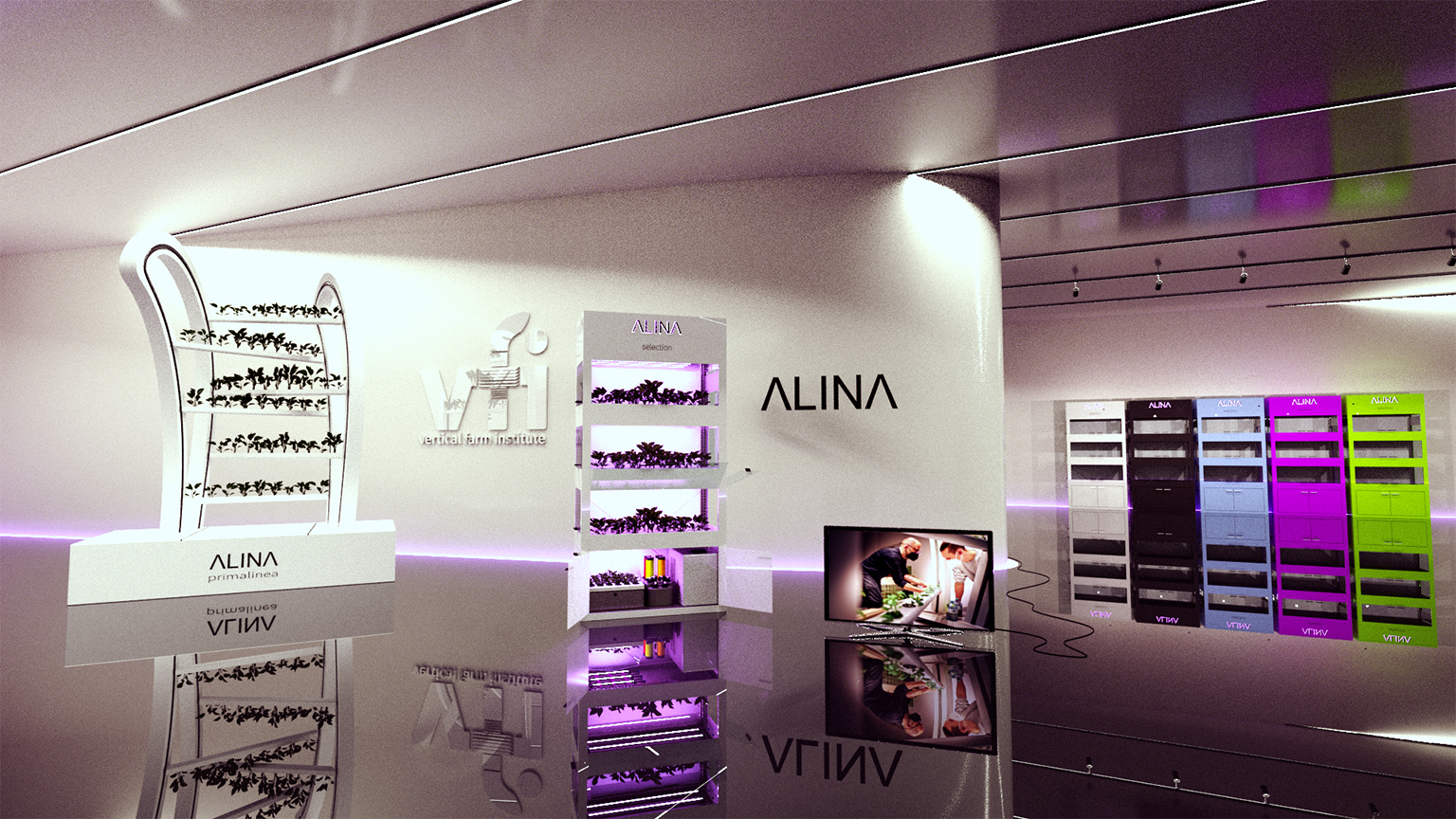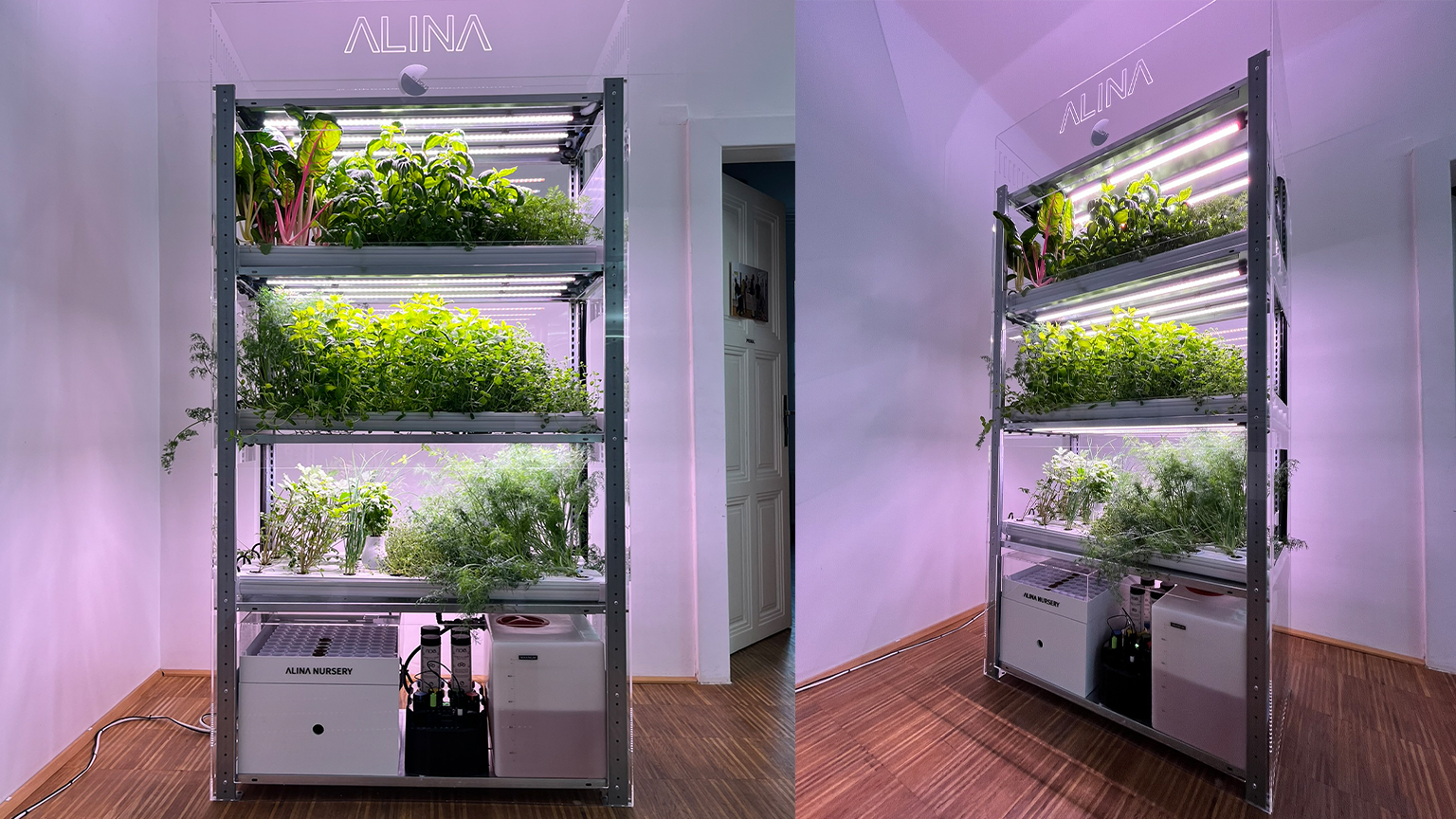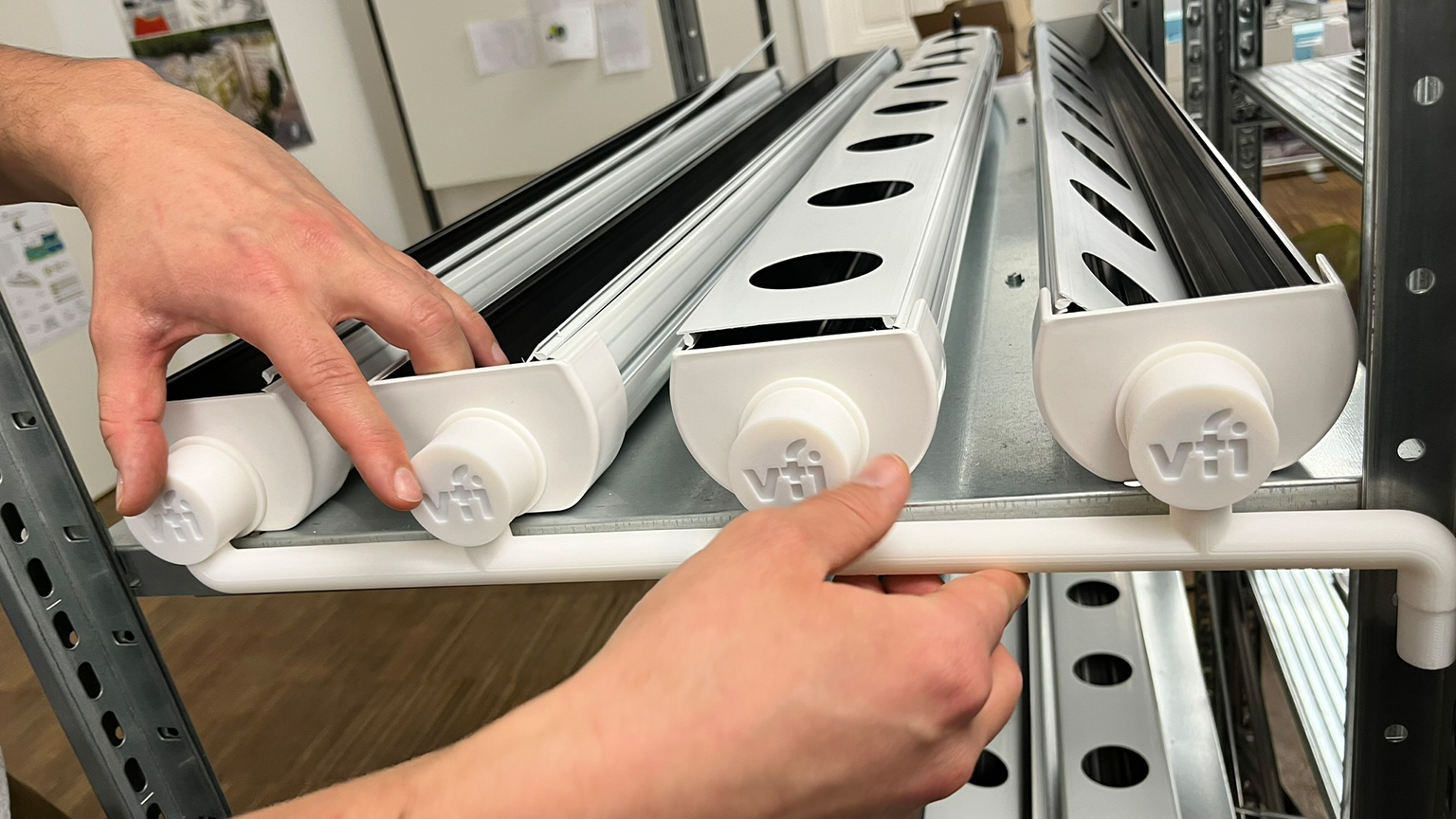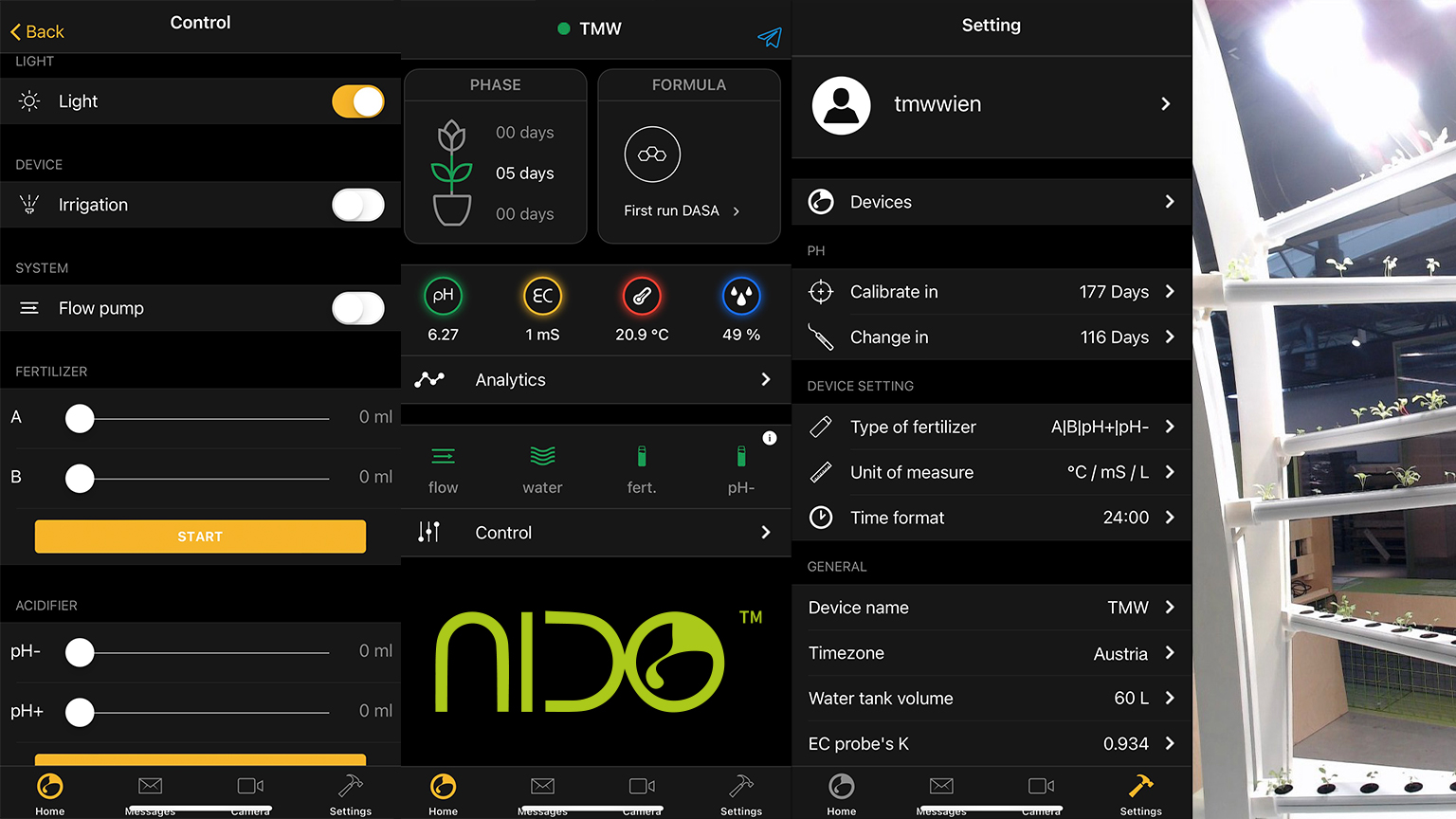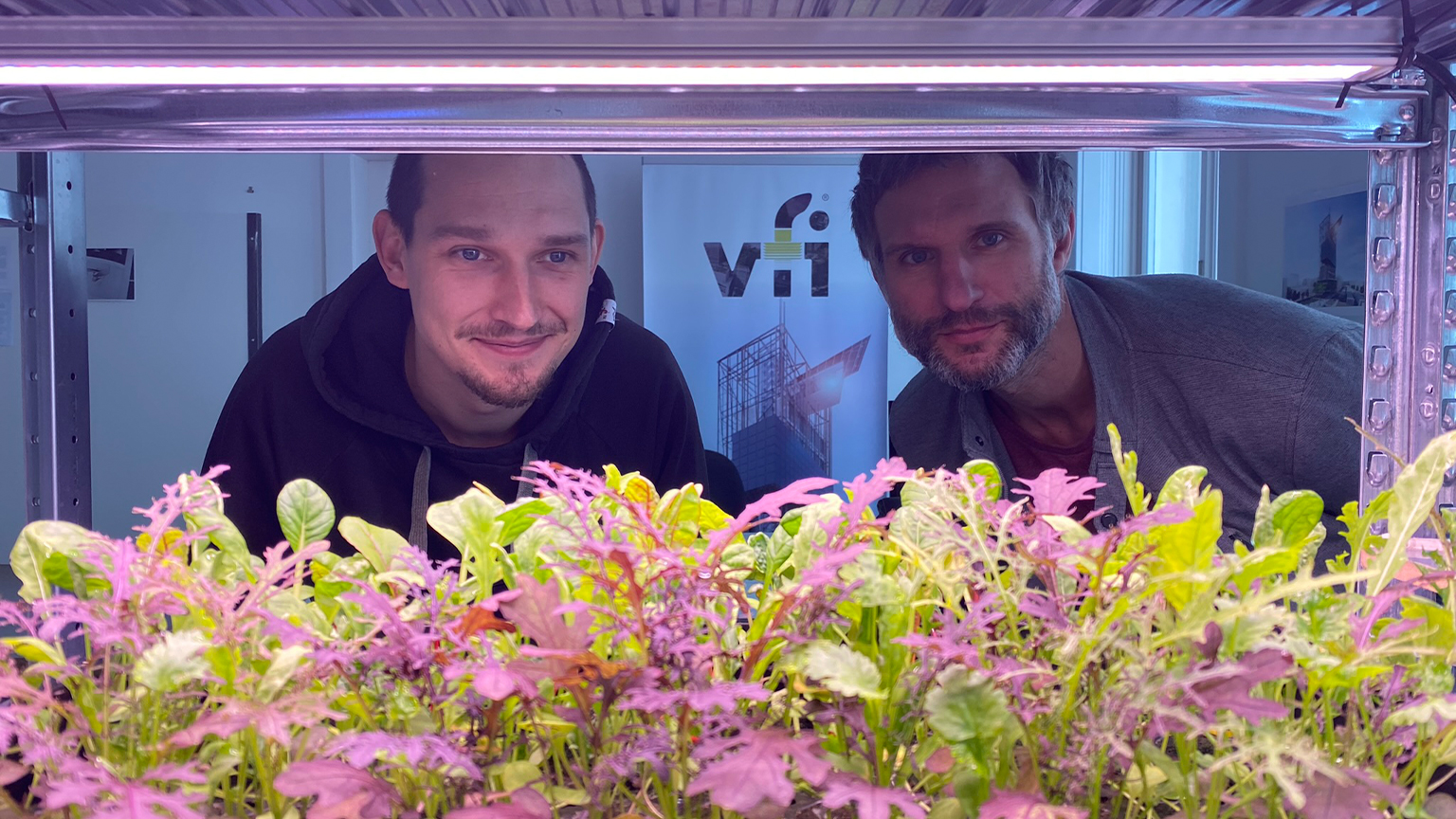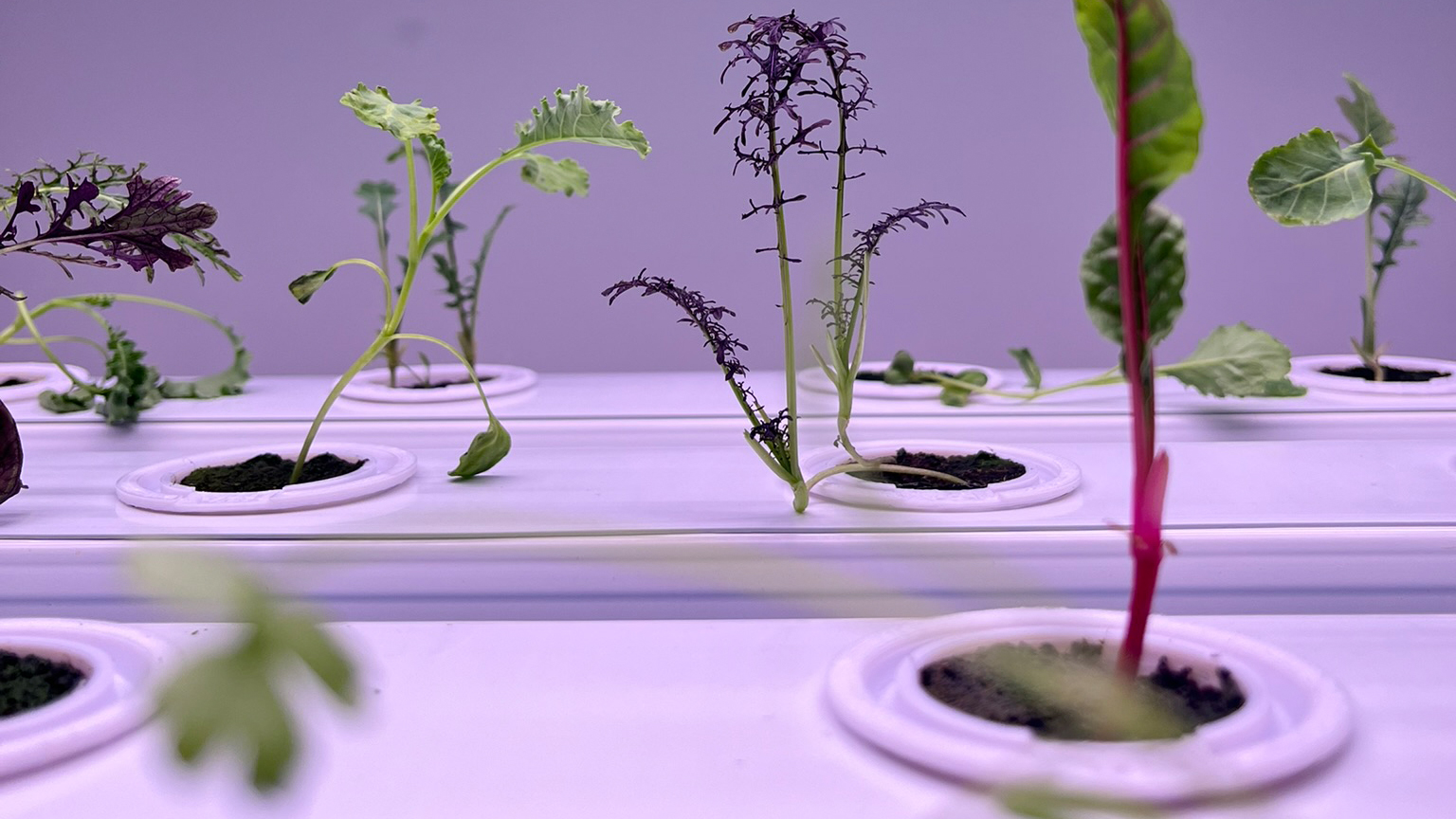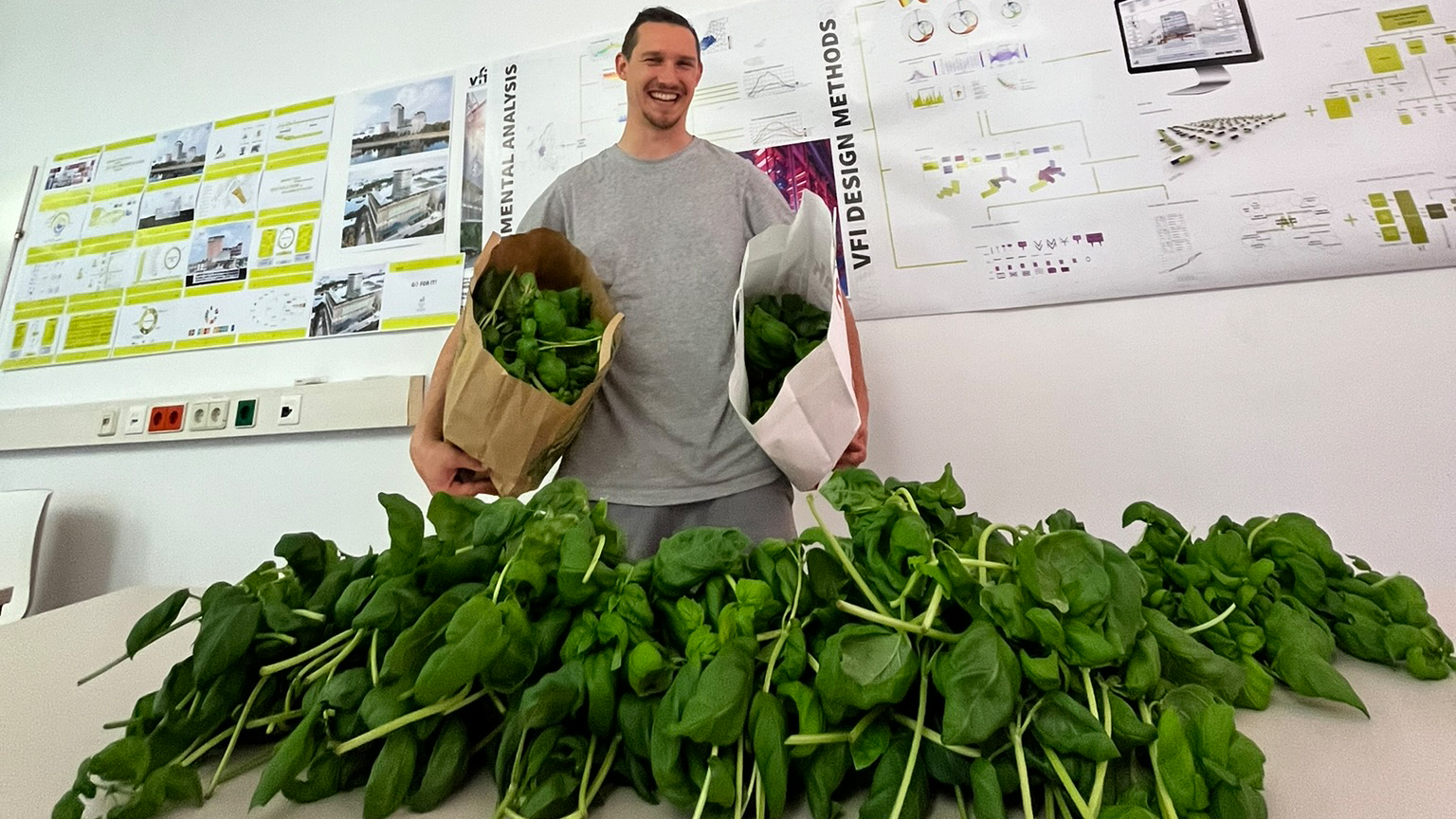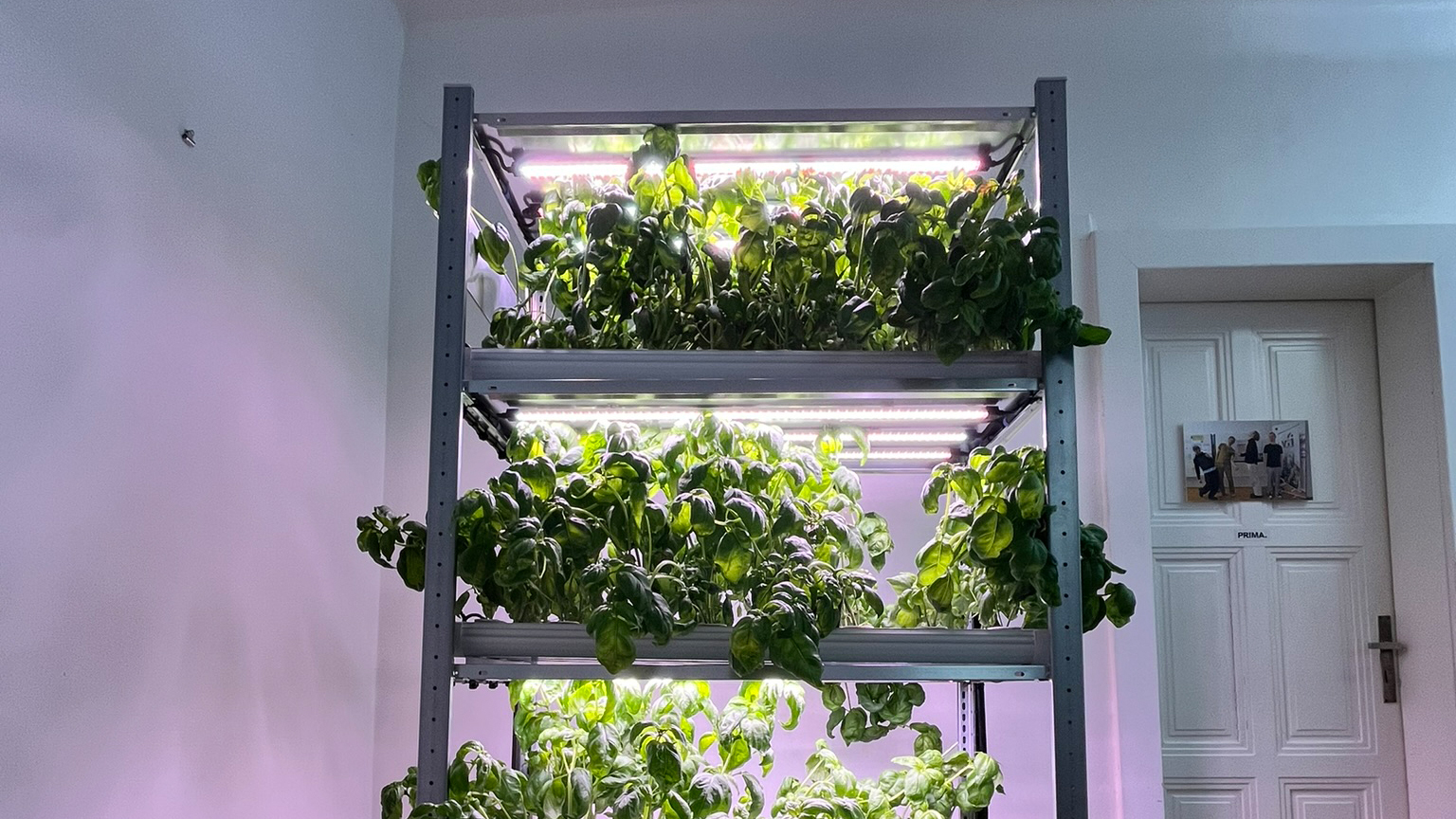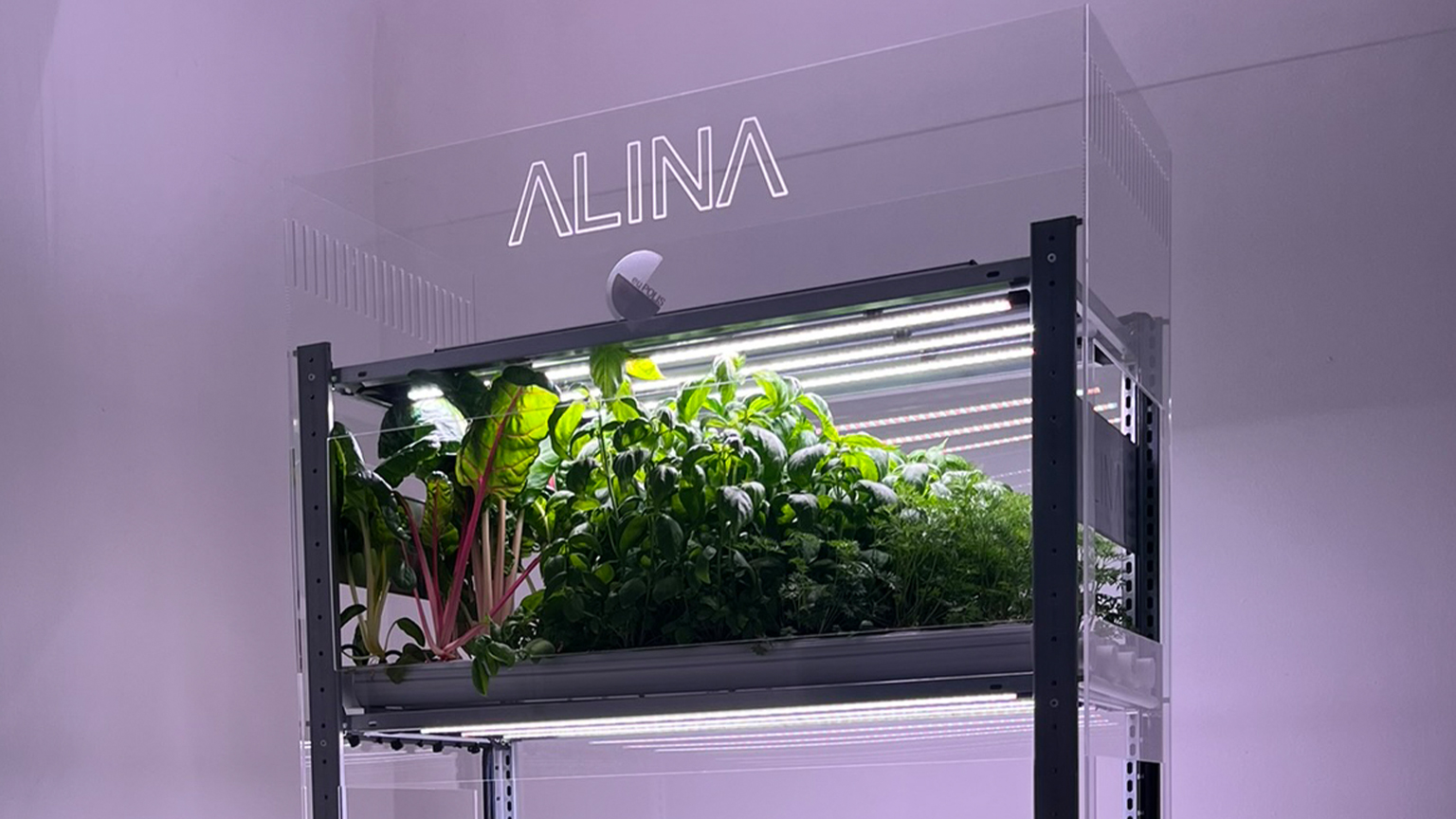ALINA :: Research Facility
Energy and Ressource Optimization
Design Development from ALINA primalinea to ALINA selection (research facility) ready for serial production
Work in Progress :: ALINA as it looks today (August 2024)
Lighting fixtures :: Light recipe for the nursery developed with David Schmidmayr, Better Plants
Component design, prototyping, 3D-print and assembling by vertical farm institute
Fertigation system and remote control provided by NIDO.
Valentin Urabl and Martin Kaftan watching the layer of NFT-microgreens
Crop Variety :: End of nursery size
First Harvest in spring :: 6,5 kg of Basil per square meter.
Basil size at the end of first test run
Actual picture of ALINA :: August 2024
ALINA :: System Description
Cultivation System
This is a hydroponic cultivation system. The chosen design is called Nutrient-Film-Technique (NFT). In this system, the nutrient solution is pumped in cycles into the growing channels and flows back into the water tank via the drainpipe. The roots grow in the channels, which do not contain any substrate. The required nutrients are added to the water in the form of mineral fertiliser. The controller monitors the water values and adds the two-component fertiliser (A/B, ratio 1:1), phosphoric acid to lower the pH value or potassium hydroxide to increase it to the nutrient solution as required. The lighting and irrigation are controlled via the controller using WIFI adapters.
Lighting
Manufacturer: SanLight, Model: EVO 3-100 (then changed to Flex Pro)
The plants are illuminated with two plant lamps from SanLight model EVO3-100. The light is generated by LEDs (light emitting diode). This technology is currently the most efficient form of lighting for plants. Each of the two lamps has a power consumption of 190 W and a power factor of 0.95. The photosynthetic photon flux (PPF) is 520 µmol/s and the emission wavelength is 400-780 nm.
Water Tank
The water tank holds approx. 74 L of nutrient solution. It is essential to ensure that the water level does not fall below the minimum mark.
Air Pump
The air pump enriches the nutrient solution with oxygen 24/7.
Irrigation Pump
The irrigation pump is located in the tank, has an input of 55 W and a pumping capacity of up to 3000 l/h.
Tubes
A 16 mm PE tube is connected to the irrigation pump, which is divided via a Y-piece to supply both halves of the arch with nutrient solution. The inflow to the channels is via 6 mm hoses, which are connected to the PE tube via quick connectors. On the outlet side, silicone hoses are connected to the channels, which are connected via T-pieces to the 16 mm PE tubes that lead back into the tank. Drainage then got a redesign and printed as PLA-tubes.
Fertilisation Controller
The controller (NidoPro) measures the pH value of the nutrient solution and regulates it if it is outside the set range. If it is too high, phosphoric acid is added to the nutrient solution. If it is too low, potassium hydroxide is added to the nutrient solution. The conductance (EC) of the nutrient solution indicates how many salts are dissolved in the water (fertiliser concentration). If the conductance of the nutrient solution decreases because the plants absorb nutrients or tap water is refilled, the controller adds the two-component fertiliser (A/B, ratio 1:1) to the nutrient solution.
The lighting and irrigation are switched by the controller via WIFI adapters. The various parameters can be set and controlled via the associated app.
A camera is connected to the controller, which makes it possible to see the plants. It is not a video recording, the images are not saved and are only actively retrieved in the app. We should put it on our website, I know. Coming soon…
